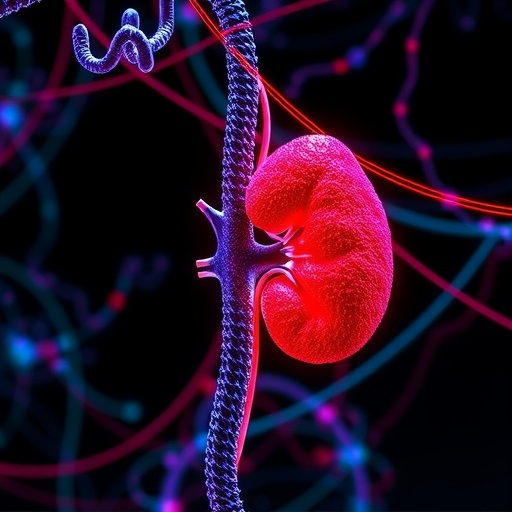In the ever-evolving landscape of neuroscience, the quest to unravel the complexities of the brain has entered a new era, driven by the convergence of multiple cutting-edge technologies. At the epicenter of this revolution lies the mouse visual cortex, a powerful experimental model that has become instrumental in dissecting the intricate architecture and dynamic functionality of cortical circuits. Recent advancements, as detailed in a groundbreaking study published in Nature Neuroscience, highlight a transformative approach centered on the integration of multimodal data—an approach that promises to reshape our understanding of how brain regions coordinate and operate at multiple scales, from molecular identity to neural computations in vivo.
This research harnesses the power of emerging technologies that probe neural systems with extraordinary precision, transcending the limitations of any single method. Through innovative combinations of transcriptomics, connectomics, electrophysiology, and in vivo imaging, the study pioneers a comprehensive framework to link cellular diversity with connectivity and functional output. By focusing on the visual cortex of the mouse, a system that offers exceptional tractability for in vivo and ex vivo experiments, the work presents an unprecedented ability to bridge the gap between microscopic cellular characteristics and macroscopic brain circuit behavior.
One of the central themes of this integrative approach is the identification and classification of cortical cell types. Traditional classification schemes based solely on electrophysiological properties or morphology are now being redefined, with transcriptomic profiles providing a molecular fingerprint that adds crucial specificity. These genetic signatures allow neuroscientists to categorize neurons more accurately and to trace their lineage and developmental trajectories. Such precise cell typing underpins the construction of detailed maps of brain connectivity that highlight both stereotyped and variable circuit motifs across individuals.
The mapping of connectivity spans various hierarchical scales—from synaptic links between individual neurons, to mesoscale connections between cortical areas, and global networks spanning multiple brain regions. Using sophisticated tracing methods, as well as high-resolution imaging of axonal projections, researchers can now chart the diverse wiring patterns that underlie distinct neural computations. Combining anatomical connectomics with functional readouts enables the parsing of circuit motifs that are engaged during sensory processing, decision-making, and behavior, thus revealing how anatomical architecture supports information flow.
Simultaneously, functional recordings in vivo provide a dynamic perspective on the cortical circuitry. Advanced techniques such as two-photon calcium imaging and state-of-the-art electrophysiological recordings capture the activity of large populations of neurons with cellular resolution during behaviorally relevant tasks. This layer of data contributes to understanding how different cell types and circuits participate in sensory encoding and integration, how neural ensembles coordinate temporally, and how network states fluctuate in response to external stimuli or internal brain states.
The fusion of these multimodal datasets—transcriptomic, anatomical, and functional—necessitates sophisticated computational frameworks. Machine learning algorithms and statistical models are critical for mining large, heterogeneous datasets to uncover meaningful patterns and infer circuit principles. Mechanistic computational models play a pivotal role in testing hypotheses about how architectural features translate into functional dynamics and ultimately behavior. This theoretical component is not merely supportive; it is essential for synthesizing disparate data streams into coherent models that can predict circuit behavior under novel conditions.
An additional crucial element propelling this integrative neuroscience forward is the commitment to open science. Open sharing of datasets, tools, and models fosters collaboration, reproducibility, and accelerated discovery. By making resources widely accessible, the field enables cross-validation of findings, the refinement of analytic techniques, and the building of comprehensive community-driven brain atlases. This culture of transparency maximizes the scientific return on large-scale investments and democratizes access to cutting-edge neuroscience tools.
The study’s focus on the mouse visual cortex benefits from the extraordinary wealth of prior research, genetic tools, and experimental accessibility associated with this system. Mouse models permit targeted manipulation of specific neuron types using genetic methods, allow longitudinal observation of circuit changes during learning or disease, and provide a platform to test causal relationships between circuit architecture and function through optogenetics and chemogenetics. The visual cortex’s well-characterized sensory inputs and processing streams serve as an ideal template to explore general principles applicable to other brain regions.
Moreover, this integrated approach yields insights that transcend descriptive anatomy and function. By combining modalities, researchers can begin to decipher the mechanisms underlying cortical computation, plasticity, and hierarchical processing. For example, linking gene expression profiles to synaptic connectivity patterns helps reveal molecular determinants of circuit specificity. Overlaying functional data reveals how these circuits implement computations such as feature extraction, gain control, and predictive coding, advancing understanding from static maps toward dynamic brain function.
The implications of this research extend beyond fundamental neuroscience. Understanding cortical circuit architecture and function at this resolution has broad clinical relevance, promising to inform strategies for diagnosis and treatment of neurological disorders where circuit dysfunction plays a key role. Precision medicine approaches may emerge from identifying circuit signatures associated with disease states or from targeted interventions that restore normal circuit dynamics. The multimodal integrative framework thus holds the potential to bridge molecular genetics, systems neuroscience, and clinical neurology.
Furthermore, this research exemplifies the increasing necessity of interdisciplinary collaboration among experimentalists, computational scientists, and theoreticians. The complexity and volume of data demand novel computational methodologies and theoretical insights to transform data into understanding. This holistic approach not only advances neuroscience but also drives innovation in data science, artificial intelligence, and systems biology, catalyzing a virtuous cycle of technological and conceptual progress.
In sum, the integration of multimodal data to elucidate the mouse visual cortex’s circuit architecture and function represents a paradigm shift in neuroscience research. It moves the field toward holistic, multidimensional descriptions of the brain that capture richness and nuances previously inaccessible. This shift enhances not only our grasp of brain structure and function but also our ability to manipulate and model neural circuits, opening new frontiers in brain science.
As the field progresses, challenges remain in scaling these approaches to larger and more complex brains, such as those of primates and humans. However, the mouse visual cortex platform serves as a crucial testbed to develop, validate, and refine the multimodal integrative methods that will guide future investigations across species. The journey towards a comprehensive brain understanding is accelerating, propelled by integrative neuroscience’s promise to unravel the brain’s deepest mysteries.
Collectively, this vision is faithfully captured in the work of Arkhipov and colleagues, whose integrative methods and open science ethos set a new gold standard. Their findings underscore the power of combining novel high-resolution technologies, computational rigor, and collaborative spirit. By weaving together multiple data modalities, their research offers an unprecedented window into cortical circuit architecture and function, charting a course for neuroscience in the coming decades.
Subject of Research: Mouse visual cortex circuit architecture and function
Article Title: Integrating multimodal data to understand cortical circuit architecture and function
Article References:
Arkhipov, A., da Costa, N., de Vries, S. et al. Integrating multimodal data to understand cortical circuit architecture and function. Nat Neurosci 28, 717–730 (2025). https://doi.org/10.1038/s41593-025-01904-7
Image Credits: AI Generated
DOI: https://doi.org/10.1038/s41593-025-01904-7
Tags: brain circuit behavior analysisbrain function and structurecellular diversity and connectivitycortical circuit architectureelectrophysiology in vivo imagingin vivo and ex vivo experimentsinnovative neuroscience methodologiesmouse visual cortex researchmultimodal integration in neuroscienceneural systems technology convergencetranscriptomics and connectomicstransformative neuroscience approaches





